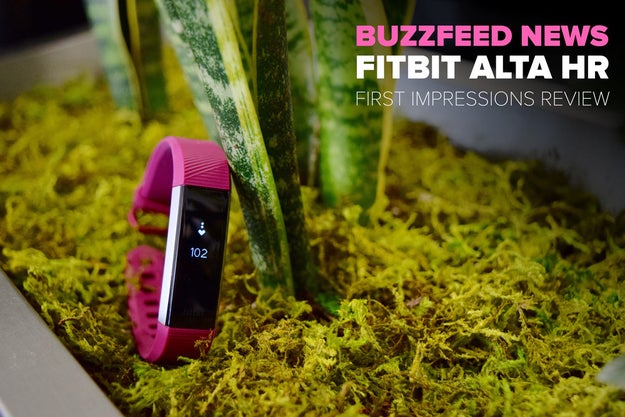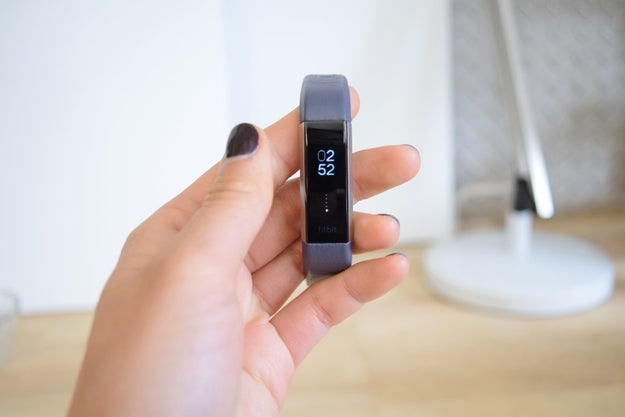The stylish fitness wearable gets an upgrade, and the app gets new sleep-tracking features.

The ultra-slim Alta was one of Fitbit’s most popular wearables in 2016. Barely a year later, Fitbit is debuting the slightly rebooted Alta HR, which adds a feature for the fitness-conscious: heart-rate tracking. The technology is typically found on chunkier wristbands and smartwatches, like the Apple Watch or Fitbit’s own Charge 2 — but now it’s available on the skinny-as-a-bracelet Alta HR.
At the same time, Fitbit is rolling out new app features that purportedly tell you about your sleeping habits in detail.
We tried out the Alta HR and the sleep features for a couple of days. While we didn’t have enough time to draw definitive conclusions about each new product, we’re sharing our first impressions. Fitbit’s latest wristband can be preordered now and will be available in April, while the sleep features will go live sometime this spring.
Nicole Nguyen / BuzzFeed News
The overview

The same things we loved and hated about the Alta were also true of the Alta HR. The device itself is very comfortable to wear and, as we mentioned in our previous review, it’s also one of the sleekest, most attractive fitness wearables available on the market.
The touchscreen, however, remains a guessing game. The Alta is a button-less device, which means that to scroll through your stats or turn on the screen, you need to tap it. The problem is, it usually takes two or three tries (targeting different parts of the screen, tapping with varying levels of force) to get the screen to respond.
A Fitbit representative tells us that swiftly double-tapping the bottom corners of the tracker are most effective – but even with that advice in mind, it’s tough to get the motion exactly right while on the move, specifically when attempting to view your heart rate during a dimly-lit spin class.
The Alta HR’s “smart features” – call, text, and calendar notifications – are helpful, unless you use an alternative messaging app like WhatsApp, Messenger, or Signal, in which case you won’t get a text alert. The trackers’ “smart features” are limited to SMS.
Nicole Nguyen / BuzzFeed News
During our workouts with the Alta HR and Apple Watch for comparison, it was hard to get a consistent reading.

Fitbit products have gone beyond counting steps and focused increasingly on measuring exercise. Last year, the company introduced a “cardio fitness score” that shows you how fit you are (and can be) on its devices with heart-rate tracking. That's based on your resting heart rate and profile (weight, height, age, and gender). And the app recommends ways to improve; for example, Nicole was told to increase the intensity of her exercise in order to increase her score by 20%. Intensity is measured in part by being in different heart rate zones, like peak (the most intense), fat burn (least intense), cardio, and out of zone (not exercising).
This all depends on the accuracy of the heart-rate reading, of course, so we worked out with the new Alta HR and compared it to the Apple Watch (both the original and second-generation versions, which share the same heart-rate sensor). And in our experience, the Alta HR's accuracy seems to wane with activity.
Stephanie went on a run and, at one point, the Alta HR said her heart rate was 173 beats per minute, while the Apple Watch said 88. Another time, the Alta HR said 125 and the Apple Watch read 105. Both bands were affixed tightly, with the watch further up the wrist.
Shelten Yuen, Fitbit's vice president of research, said he didn't want to comment on the Apple Watch's readings since he doesn't know much about how it works. But "the Alta HR seems like it was probably working pretty well," he told BuzzFeed News.
Stephanie M. Lee / BuzzFeed News
from BuzzFeed - Tech https://www.buzzfeed.com/nicolenguyen/fitbit-alta-hr-review?utm_term=4ldqpia
No comments:
Post a Comment